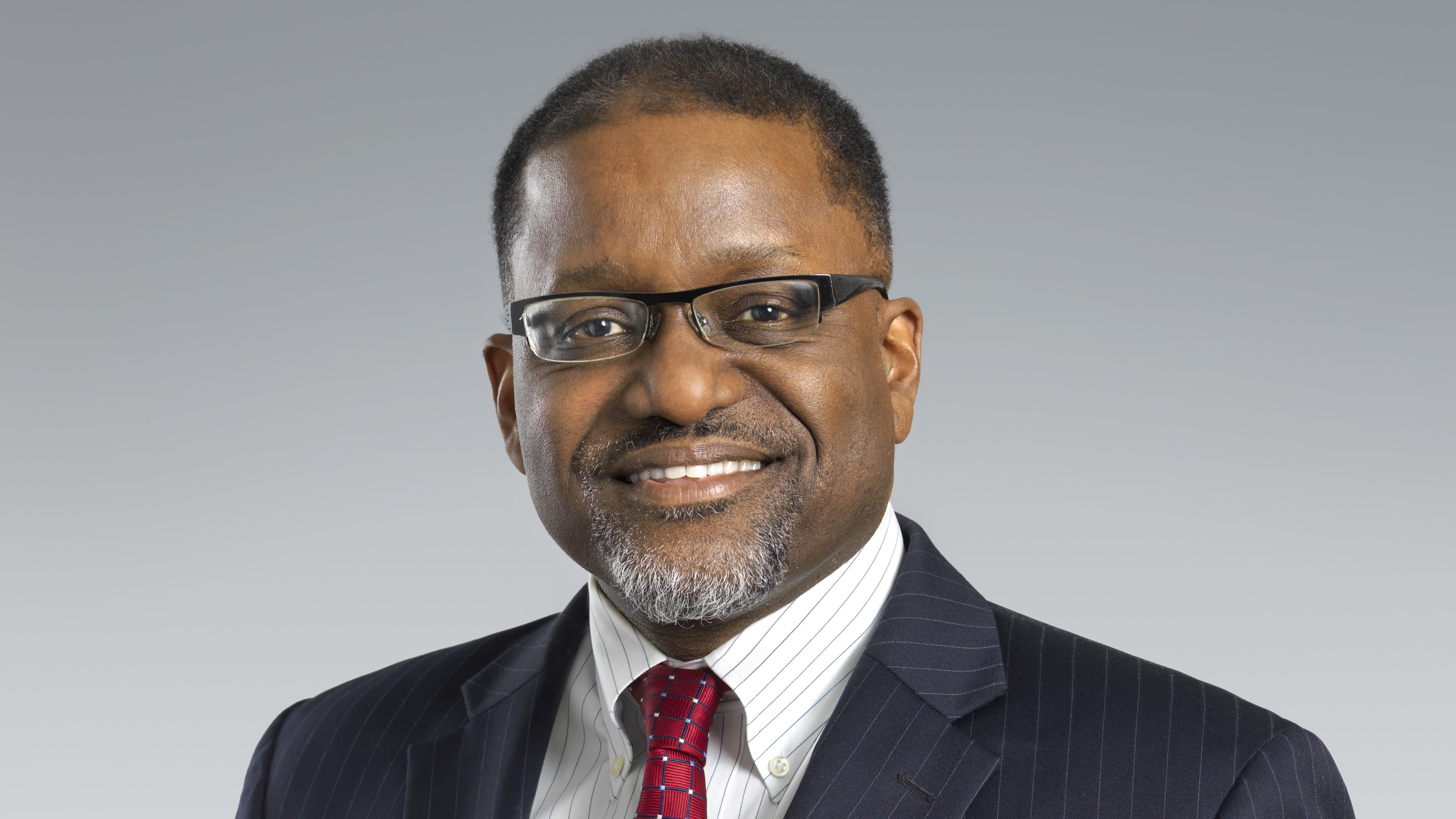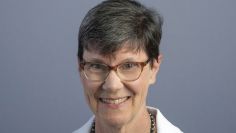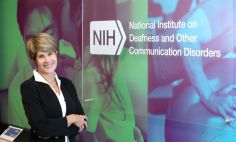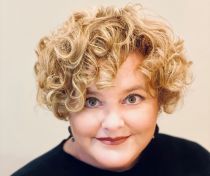For 75 years, the National Heart, Lung, and Blood Institute (NHLBI) has studied many different diseases and conditions that are distinct and can intersect. Under Director Gary H. Gibbons, M.D., NHLBI participates in many efforts to tackle heart disease, address long COVID, and reduce health disparities. Dr. Gibbons talked with NIH MedlinePlus Magazine about some of these efforts and his personal interest in cardiology.
What inspired you to go into medicine? What was your journey to becoming a cardiologist?
I was always a very curious kid growing up. I wanted to know how and why things work. My parents were schoolteachers and gave me books for children that would explain scientific concepts like the solar system or why is the sky blue or how your body works. I was blessed to grow up in Philadelphia where they have the Franklin Institute, which is free for children. I could take bus and subway rides by myself and explore that science museum. I think it was that curiosity about how and why things work, and the body is an incredible system. I wanted to know more about it.
I wanted to understand why things go wrong in the body and how that relates to patients and people suffering. Growing up in downtown Philadelphia, you meet people with various illnesses, especially conditions that are common among Black communities. That was the origin of me becoming a cardiologist.
Cardiology is one of those areas in medicine where the patients either were dead and resuscitated or were close to dying. And being a cardiologist, you could take someone who literally couldn’t breathe, use your knowledge, and within days or even hours, they could be back to their daily lives. I always wanted to be the kind of doctor that could relieve that suffering. It’s what I do today, just on a different scale.
How did you become NHLBI Director, and why were you interested in the role?
That’s probably a twisting tale of a journey. My goal in medical school was to become a primary care physician in communities like the one I grew up in. But that trajectory changed when I asked one of my professors, why are African Americans more likely to have high blood pressure and strokes or heart disease as a result? As good professors do, he challenged me to come into the lab and pursue that question. The rest is history.
I spent a summer that turned into two years. I was bitten by the bug of science and that curiosity again. That’s what expanded my horizon not only to be a clinician, but to be a cardiologist-scientist. I would not only take care of patients to relieve their suffering. I could also try to understand what’s driving the underlying suffering and disease. That put me on a research path and was critical to me becoming an academic who was funded by NIH, then serving on advisory councils and study sections.
Then I became more aware of the impact NIH had beyond any single patient—to better understand heart, lung, blood, and sleep disorders at scale to improve science that will enhance the health of all communities in our nation. It’s a higher order of fulfilling the same goals I wanted to do at an individual level.
How does NHLBI balance all the areas under its namesake: heart, lung, and blood conditions?
We are also the home of the National Center on Sleep Disorders Research, so add sleep and circadian biology (the study of your body’s 24-hour cycles). We have to be aware of how those conditions are different. But there often are scientific connections between separate NHLBI divisions.
For example, our sickle cell disease initiative is taking advantage of gene therapy and gene editing. The technology exists to take genetic code and manipulate it in a way that can improve human health and prevent disease. That could also apply to lung and heart diseases.
We often rely on statins and other drugs to lower cholesterol. There might even be a way to manipulate genetics to lower an individual’s cholesterol for their entire life. Lowering cholesterol can prevent heart attacks, strokes, and other forms of disease. But the potential exists in the future to use these other genetic therapies as an alternative way of reducing the risk of heart disease.
Those are the things that are on the research agenda.
Heart disease has been the leading cause of death in the United States for a long time. Has our understanding of it changed over time, and is there anything we can do to prevent heart disease?
It’s important to recognize the tremendous progress that’s been made. NHLBI was first established as the National Heart Institute in 1948. That was at a time when heart disease exceeded infectious disease as the number-one killer in the United States. It wasn’t understood why middle-aged folks were dropping dead.
One of the first things done was setting up the community-based Framingham Heart Study. That set the stage for how we can study populations and epidemiology. That helped us identify the risk factors that predispose you to heart attacks. It became clear that high cholesterol, high blood pressure, diabetes—all these things were risk factors that promoted heart disease. We also recognized that things like cigarette smoking could affect risk.
That set into motion a number of studies. That’s resulted in about a 70% reduction in heart disease over the last 50 years. It’s proof of how NIH and NHLBI, through research and discovery, can enhance the health of the nation.
Despite that progress, heart disease persists as the number-one killer. One thing that slows progress is that not all communities have benefited from turning that science into better health care, particularly communities of color, Native Americans, African Americans, populations in rural communities, or those of lower socioeconomic status. They may live in environments where it’s difficult to have a healthy lifestyle. They don’t have places to walk safely, or they may live in food deserts. Addressing health disparities in cardiovascular disease is an ongoing part of NHLBI’s strategic vision.
To that end, we created more heart studies like Framingham in the most vulnerable communities. We’re also working in communities to create heart disease interventions for them. The NIH Community Engagement Alliance Against COVID-19 Disparities program, which takes lessons from the pandemic to support community resilience, is one example.
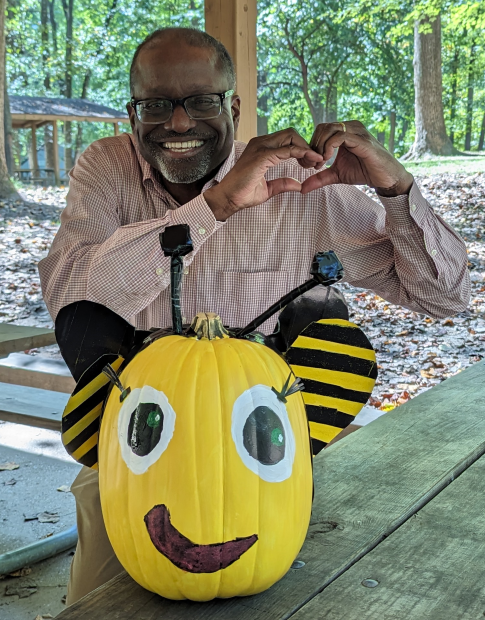
When he’s not working, Dr. Gibbons likes to enjoy nature.
Another initiative inspired by the pandemic is the NIH Researching COVID to Enhance Recovery (RECOVER) clinical trials for long COVID. How is NHLBI contributing to this project?
This is one of the post-viral syndromes we see in medicine. SARS-CoV-2 (the virus that causes COVID-19) is a new virus, and there’s a potential for [patients to develop] long COVID. [They can] suffer from more than 200 symptoms from each organ system in the body. It’s logical for NHLBI to be part of RECOVER because of the vascular effects of COVID-19. Blood clotting is part of how this virus affects the body.
We’re making progress in the RECOVER consortium of institutes across NIH. Nearly 90 publications both in and out of the pipeline are already giving us new insight into what long COVID is and what may be driving it. We also have clinical trial platforms that are looking at certain symptoms like dizziness and brain fog. We prioritized the symptoms that patients said were the most meaningful to relieve their suffering.
One of the principles of RECOVER was to put the patients at the center of everything we do. Listening to them and their caregivers and reassuring them that this is a new post-viral disorder, that it is real and not in their heads. Patients have been involved from the beginning of the initiative. We want to be sure patients are developing the protocol with researchers.
Extreme weather has affected air quality in new ways. What can people do to protect their respiratory health?
It’s clear and unmistakable that the climate is changing and that it has implications for health. The public is becoming more aware of these issues. It reminds us that we’re all one planet, and that’s key to enhancing our resilience and adaptability from the effect of climate on our health.
It’s not just air quality; heat stress also poses a threat to the cardiovascular system. Climate change also affects water and flooding. That has implications for infectious diseases like the Zika virus that affect blood systems and blood supply.
We need to meet communities where they are in a way that is tailored to the local needs so that people can hopefully take self-protective measures. For example, heat stress in urban areas can cause quite incredible heat differences on asphalt streets and rooftops. This is particularly harmful for older populations. Simple interventions like cooling centers and encouraging communities to protect their elders can help people protect themselves. Children and pregnant women are also vulnerable to climate change. Exposure to air pollution can have lifelong consequences such as developing asthma.
What advice would you give someone who's interested in becoming a cardiologist?
It’s really helpful to be driven by a sense of compassion. That’s what attracts many of us to become physicians in the first place along with that sense of wanting to relieve the suffering of others. Generosity and selflessness motivate us as physicians, but also as a scientist, you need to have that curiosity. Part of what science does is chip away at our ignorance. For someone like me, who has been in medicine for decades, there are a lot of things I did as an intern that we don’t do anymore. The advances of science are so important to enhancing patient care over the long term.
What do you like to do for fun when you’re not working?
To have a spiritual balance in my life with family and friends is important. I enjoy music—I love jazz and gospel music. And I like to be part of a church that tolerates me singing in a choir. Sometimes going to a park and just being quiet with nature, whether it’s the ocean or the leaves. I feel it.
That’s an important part of maintaining a healthy life and thriving holistically as a person, including for mental health. Have a life of balance and of significance with opportunities for compassion and helping others. We’re learning it actually helps you live longer.




